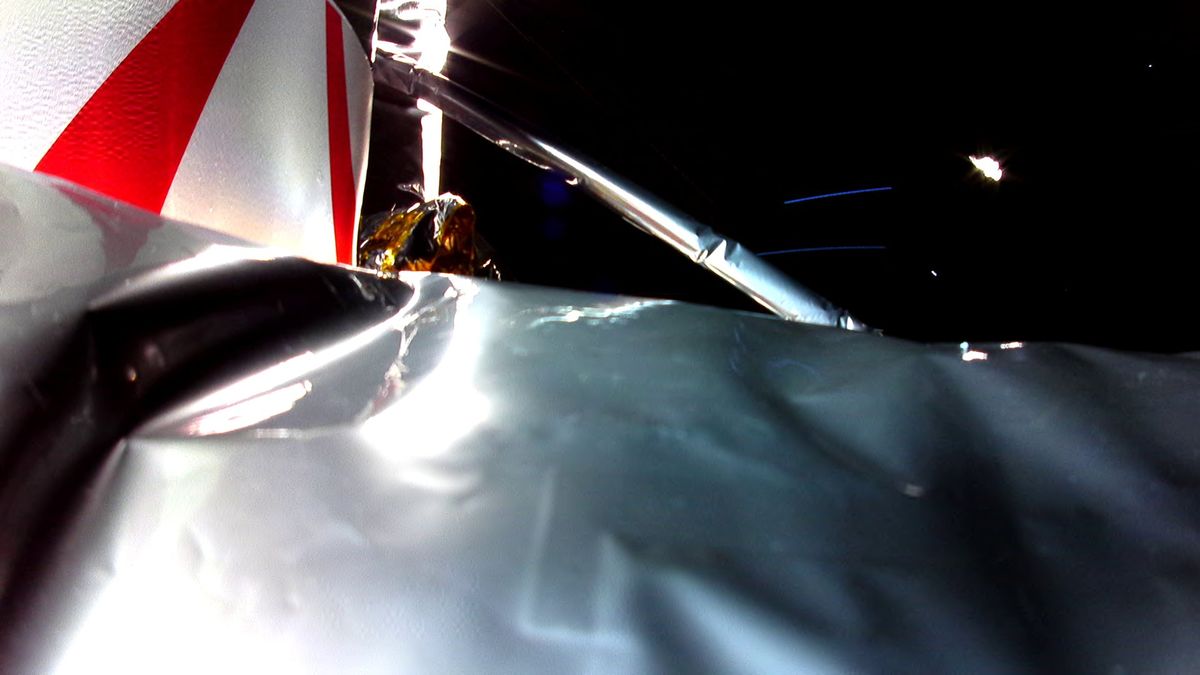Time is running out on Astrobotic's Peregrine lunar lander after it suffered a serious fuel leak shortly after being launched into space early Monday (Jan. 8).
America's private lunar lander blasted off Monday during a flawless first launch of United Launch Alliance's new Vulcan Centaur rocket as the primary booster payload. However, hours later, Astrobotic reported that the Peregrine lunar lander encountered an anomaly on its way to the Moon, which prevented it from orienting itself properly. Several updates followed over the course of Monday, including a photo taken by the lander while in space in which damaged insulation can be seen on the spacecraft, indicating a leak in Peregrine's propulsion system.
“Continuous leakage of propellant causes the spacecraft's Attitude Control System (ACS) thrusters to operate well beyond their expected service life cycles to prevent the lander from tumbling uncontrollably,” the company said. he wrote in a post on X (formerly Twitter) late Monday (January 8).
The update indicates that the Moon is definitely out of reach of the damaged lander. “If the thrusters can continue to operate, we believe the spacecraft could continue in a steady state to point to the Sun for approximately 40 hours, based on current fuel consumption,” Astrobotic's update continued. “At this time, the goal is to bring Peregrine as close to the lunar distance as possible before it loses the ability to maintain its sun-directed position and subsequently loses strength.”
Related: The first image from the crippled Peregrine Moon lander bears evidence of an anomaly
If Peregrine does not reach the lunar surface, which seems to be the likely case given its current predicament, a host of scientific experiments and commercial payloads could be lost.
On board the lunar lander are 20 customer payloads, including five science payloads operated by NASA under the Commercial Lunar Payload Services (CLPS) program that are designed to study the lunar surface, atmosphere, and radiation environment. Another NASA-led experiment, the Laser Reflector Array (LRA), would place mirrors on the moon's surface to serve as precise markers of distance and position. The Mexican Space Agency also had five small autonomous rovers on board Peregrine, which was scheduled to carry out the country's first lunar mission, and Carnegie Mellon University also had a small, student-built Nano Lunar rover on board.
Some of the commercial payloads include a piece of Mount Everest, controversial memorials of human remains and DNA, a miniature library, and letters from people from around the world. It's unclear what will happen to those payloads now that Peregrine appears unable to reach the Moon.
Peregrine was scheduled to be the first mission under the CLPS program, which aims to accelerate lunar science by placing NASA-led experiments aboard landers and commercial spacecraft. The next CLPS mission is scheduled to launch in February, when Houston-based Intuitive Machines launches its Nova-C lander aboard a SpaceX Falcon 9 rocket.

“Extreme travel lover. Bacon fanatic. Troublemaker. Introvert. Passionate music fanatic.”







More Stories
A fossilized creature may explain a puzzling drawing on a rock wall.
MrBeast Sued Over ‘Unsafe Environment’ on Upcoming Amazon Reality Show | US TV
Watch comets Lemmon and SWAN approach Earth today